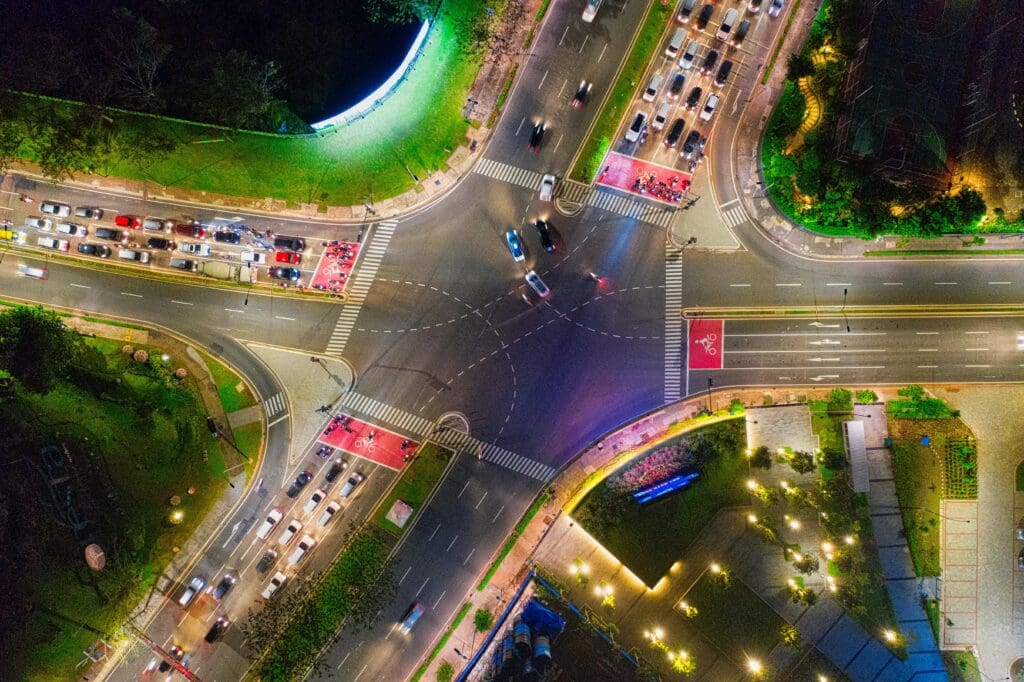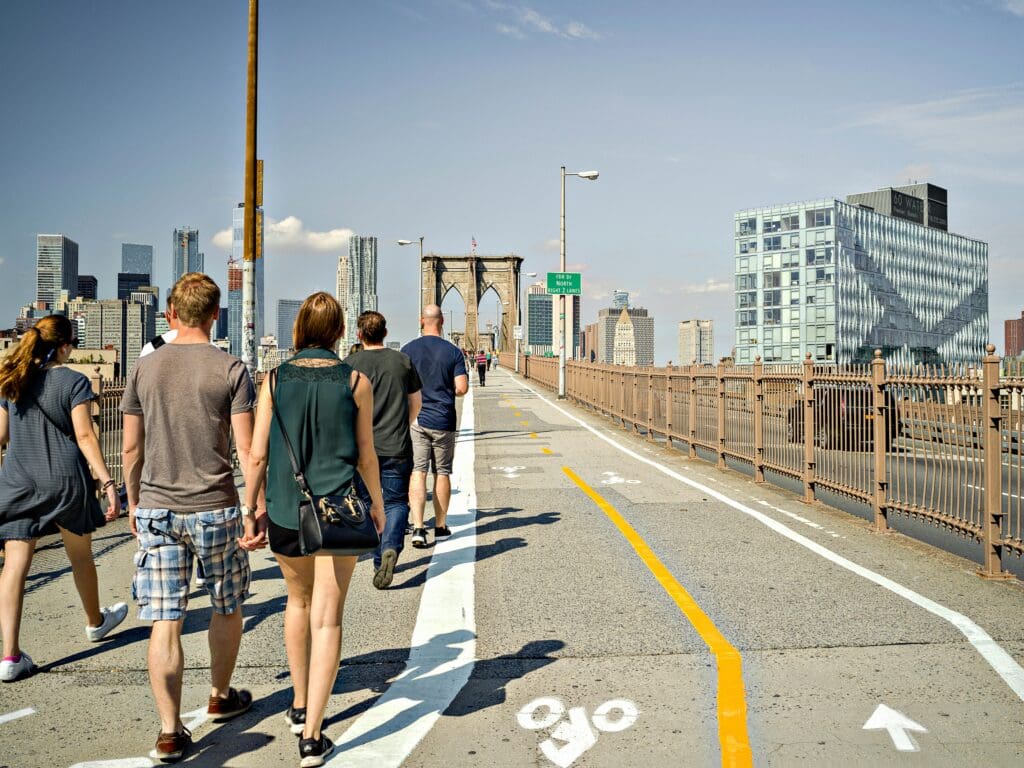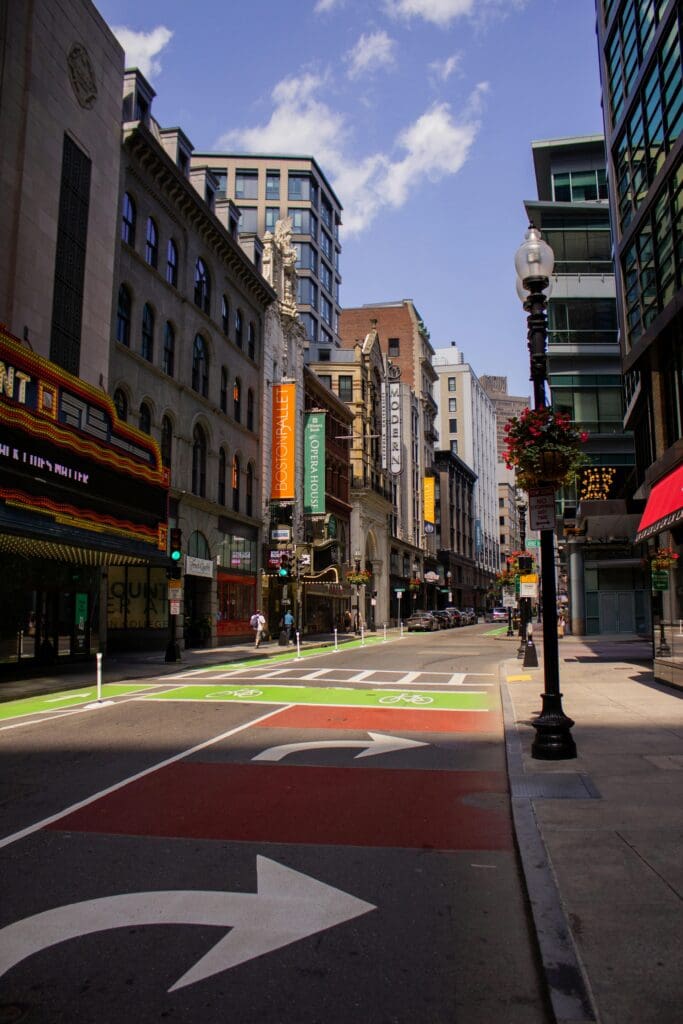Complete streets provide safety and equity for all travelers, but implementing this design approach into aging transportation infrastructure can be a challenge. Learn how to bring modern solutions to today’s systems by developing a comprehensive complete streets design policy.
What are the benefits of complete streets?

Complete streets aim to make transportation safer and more accessible for all who use the road, not just drivers. This infrastructure design approach supports multimodal transportation, ensuring that pedestrians, bicyclists, micromobility, and public transit users can get to their destination without harm.
For many travelers, today’s roads pose many issues, especially for those with disabilities or lack of access to a vehicle. Navigating streets on foot that were designed only with cars in mind puts people in danger, with distracted driving leading to an increase in collision incidents.
Most of our current infrastructure was built to move cars as quickly as possible, but modern transportation engineers recognize the need to prioritize safety over speed. By building roads designed for more than one type of travel, communities become more livable and welcoming to people of all ages and abilities.
The benefits of complete streets are:
- Safety: Redistributing the travel corridor to include designated space for all types of travel leads to enhanced protection across the board.
- Accessibility: Elevating the unique needs of public transit and non-vehicular travelers helps serve a broader population.
- Equity: Complete streets help level the playing field to promote comfortable, efficient transportation regardless of circumstances.
- Sustainability: The addition of non-vehicular travel accommodations results in a net decrease in greenhouse gas emissions.
What are elements of a complete street design?
Not every complete street is the same. Several factors can impact complete street design, such as location, site constraints, or local demographics. Transportation engineers and municipal planners collaborate to create complete street designs by assessing a community’s specific needs and delivering customized solutions.
Elements of a complete street design could include:
- Sidewalks
- Shared-use paths
- Dedicated bike lanes
- Shared vehicle/bike lanes
- Transit stops (particularly those with weather-resistant waiting vestibules)
- Crosswalks with accessible signals
- Curb extensions or other traffic calming measures
- Reduction in total number of travel lanes (i.e. a “road diet”)
- And more
How to implement a complete streets design policy

While many counties and larger municipalities have a complete streets design policy in place, there are still plenty of communities that could benefit from this approach. Implementing a complete streets design policy into existing transportation infrastructure is a multistep process that requires careful consideration across various stakeholders. You’ll need the right people, supporting policies, and action plans in place to make meaningful change.
Assemble a policy team
Developing a holistic complete streets design policy that encompasses a variety of needs demands a diverse partner team well-versed in a wide range of specialties. In addition to working with advocates for disability communities, public health needs, and community development groups, you’ll need expert insight into transportation planning and engineering.
Partnering with transportation and municipal engineers is essential for creating a robust plan on how to move from vision to reality. These experts will weigh in on everything from existing system analysis to future improvement designs, finding innovative ways to serve both people and the environment.
Draft a policy
Once you have a policy team in place, there are several framework elements that must be addressed in order to develop a comprehensive complete streets design policy. Laying the groundwork for your goals will empower you to gain support and move policies forward with key stakeholders.
Clearly define:
- Your commitment to and overall vision for your plans
- How you will address the challenges of previously underserved communities
- Thoughtful consideration on how, when, and where projects will proceed
- Desired performance metrics to track policy success
- Actionable project phases and implementation plans
Put your policy into motion
Having a policy is one thing; using it is another. Reworking your existing processes to include a complete streets policy takes extensive coordination and collaboration to push new visions forward.
You’ll need to:

Review and revise guidelines and procedures: All existing plans, manuals, regulations, and processes should be updated to reflect best practices for future transportation designs.
Set new performance measures: Regular progress reports help illustrate policy momentum and success.
Train your team: Update your policy team with scheduled workshops and/or presentations to inform and inspire as new information comes to light.
Reimagine the project selection process: Clearly defined selection criteria ensures the right projects are chosen for overall community benefit.
Engage the public: Even after initial buy in, continuous public relations efforts about project benefits help minimize frustration or confusion once construction begins.
Start building: With the right people and plans in hand, it’s time to start designing. Depending on project complexity, design and construction will likely take months or years to complete; continuously engaging with your plans, team, and community will help ensure you stay on track with meeting your complete streets goals.
Bring your complete streets design to life
Developing safe and efficient complete streets designs takes experienced leadership and a creative approach. V3 is your partner in introducing modern solutions to existing transportation infrastructure; connect with our team to learn more.

